If your goal is to clock reliable miles at home, a treadmill is still the most versatile cardio machine you can buy. It suits beginners easing into walking plans and seasoned runners building structured sessions when the weather turns or time is tight. The challenge is choosing a model that fits your space, budget and training style without paying for features you will never use.
In this guide, I will show you how to pick the right treadmill step by step, from motor power and belt size to cushioning, incline and connected training apps. You will also see top-rated examples from trusted, lab-tested roundups in the UK, plus smart options for small flats and quiet setups. We will cover realistic pricing, ongoing costs, setup and maintenance, and give you training ideas aligned with NHS activity guidelines. By the end, you will know exactly which type of treadmill suits your home gym and how to get more out of every session.
How to choose a treadmill that fits your goals and space
Motor power, speed ranges and training intensity. For mixed walking and running, look for a continuous-duty motor around 2.5 to 3.0 CHP and a top speed of at least 16 km/h. That comfortably supports brisk runs and most interval sessions without straining the drive. Buying guides from UK retailers and manufacturers consistently flag motor output and speed range as the first filter, since under-powered units feel sluggish at higher speeds and can wear faster under load.
Belt size, cushioning and comfort. If you are taller than average or plan to run, target a deck of roughly 140 x 50 cm or larger for a natural stride. Quality cushioning reduces joint stress and belt wear. Specialist reviewers and testers often call out cushioning consistency and deck stability as a key differentiator between budget and mid-range machines, so check specs and testing notes, not just marketing blurbs.
Incline, decline and hill simulations. A 10 to 12 percent incline is enough for demanding hill repeats and gentler low-impact calorie burns at walking pace. Some premium models add decline for downhill conditioning. Roundups regularly praise incline ranges for workout variety and efficient time-crunched sessions.
Consoles, apps and content subscriptions. Consider whether you want instructor-led classes or prefer simple metrics. Ecosystems like iFit, Peloton and brand apps can be motivating, but subscriptions add monthly costs. Independent lab tests weigh app depth and UI against core performance, so decide if content libraries matter to you before paying a premium.
The best treadmill categories and standout picks in 2025
Best overall home treadmill. Reviewers in the UK and US repeatedly point to NordicTrack’s mid to high-range models for balanced spec sheets, strong motors, solid decks and deep iFit content. Runner’s World and multiple expert sites consistently place the 1750 or 2450 near the top for all-round value and training breadth, especially for runners who want automatic incline and coached sessions.
When you’re working to a tighter budget but still want a feature-rich machine for your home gym, the JLL Pegasus Connected Folding Treadmill is an excellent contender. With a 2.5 HP motor, a folding design tailored for limited space and Bluetooth/app connectivity, it ticks key boxes for multi-purpose home cardio.
Space, noise and storage: solutions for UK homes
Folding frames vs compact decks. A folding treadmill can halve footprint when stored, but check stability when unfolded. Look for locking pins, hydraulic soft-drop systems and transport wheels that roll smoothly over carpets or laminate. Lab testers at Good Housekeeping rate models partly on ease of fold and day-to-day usability, which matters more than you think when space is tight.
Noise control and floor protection. All treadmills transmit vibration. A dense rubber mat reduces noise, protects floors and limits movement at pace. Quiet motors help, yet perceived noise often comes from footfall resonance, which is why compact walking pads receive praise for office use where speeds are lower. The Guardian’s walking pad review noted typical energy use of 70 to 100 W and low noise at walking speeds, useful for shared flats. The Guardian
Under-desk treadmills and walking pads. If you mainly want steps while working, a walking pad fits under a standing desk and stores upright. Which? also publishes UK-specific walking pad tests that score noise, storage and set-up, so check those if stealth and portability are top priorities.
Train smarter on a treadmill
NHS-aligned weekly plans for walking and running. Aim for at least 150 minutes of moderate aerobic activity or 75 minutes vigorous each week. On a treadmill, that could look like three 30-minute brisk walks plus one 60-minute session, or two 25-minute runs and a 30-minute interval workout. The NHS guidance is clear that you can mix moderate and vigorous efforts to suit fitness and schedule. nhs.uk+1
Interval, hill and progression workouts. Use incline to increase intensity without pounding. For example, 6 x 2 minutes at 5 percent incline with equal recoveries can lift heart rate quickly. Reviewers often celebrate incline automation and class content because it removes guesswork and keeps motivation high, which is why platforms such as iFit and Peloton Tread classes score well in tester roundups. Runner's World+1
Avoiding boredom with app content and metrics. Structured classes, scenic runs and clear lap metrics can transform adherence. Verywell Health summarises that consistent treadmill time supports calorie burn and fat loss within broader weekly activity targets, and interval formats can save time while maintaining benefits.
Budgeting, total cost and what to expect long term
Price bands and what features you get. Expect roughly these ranges: walking pads and basic compact treadmills under £400 to £600, balanced mid-range models around £800 to £1,600, and premium connected units from £1,800+. Retail ranges shift with promotions, and large chains show how wide the spectrum can be.
Subscriptions, accessories and electricity use. If you want live classes or instructor programmes, factor in monthly app fees. Budget for a mat, silicone lubricant and possibly a smart watch strap if you like HR-based training. Walking pads tested by UK media consumed around 70 to 100 W at typical use, making them inexpensive to run. The Guardian
Maintenance, warranties and resale value. Keep belts centred and lubricated per the manual to extend motor and deck life. UK lab testers like Which? look at assembly difficulty, tidy construction and safety, which can correlate with fewer headaches later. Retain your receipts and packaging for potential resale if you upgrade.

Setup, safety and maintenance checklist
Delivery, assembly and first-run calibration. Measure doorways and route to final location. Some brands offer room-of-choice delivery. After assembly, check belt alignment and tension before first use. Reviewers frequently note that careful initial setup prevents noisy rubbing and premature wear. Treadmill Reviews
Lubrication, belt alignment and error signs. Use the manufacturer’s recommended silicone oil, usually every 3 months or after a set mileage. If the belt drifts left or right, minor hex key adjustments fix tracking. Scraping noises, burning smells or repeated circuit trips are stop-now issues and may require a technician. Practical how-to sections in UK buying guides walk through these steps.
Safety keys, child locks and pet-friendly habits. Always clip the safety key to your clothing. Remove it after workouts if you have children or pets. Some consoles offer passcodes or child locks. These small habits reduce the rare but serious injuries that can occur with moving belts. General safety notes and standards references are often included in encyclopaedic overviews of treadmills.
Custom image and infographic concepts
Infographic: Treadmill chooser at a glance
- What it shows: A decision tree leading you from goal (walking, 5K training, high mileage) to motor power, belt size, incline range and foldability.
- Alt text: “Treadmill buying guide flowchart showing motor power, belt size, incline and folding choices for home gym buyers.”
Diagram: Space and noise planning for flats
- What it shows: Top-down floor plan with treadmill footprint, recommended clearance, mat placement and suggested neighbour-friendly time windows.
- Alt text: “Diagram of treadmill footprint, clearance and mat placement to reduce noise in small UK flats.”
Mini infographic: Weekly plans on a treadmill
- What it shows: Two sample weeks aligned with NHS guidance: one walking focused, one running with intervals and hill work, plus a small note on total minutes.
- Alt text: “Two treadmill training schedules aligned with NHS activity guidelines for walking and running.”
Quick takeaways
- Match motor power and belt size to how you will train, not how a spec sheet looks.
- Incline adds intensity without impact and makes short workouts count. TechRadar
- For small flats, choose foldable frames or walking pads and add a dense mat to cut noise.
- Plan weekly 150 minutes moderate or 75 minutes vigorous on your treadmill for health benefits. nhs.uk
- Check subscriptions and ongoing costs before you buy. The app you will actually use is worth paying for.
Conclusion
A treadmill can unlock consistent training at home, whether your aim is daily steps, a 5K PB or structured hill sessions without leaving the house. Start by matching core specs to your intent: a steady motor for your pace, a deck long and wide enough to run comfortably, cushioning you like, and an incline range that supports efficient workouts. If space is tight, prioritise a foldable frame or a walking pad that keeps noise low and storage easy. Use NHS guidance as your north star for weekly minutes, then add intervals and hills to progress in less time. Finally, be honest about whether you will use subscription content or prefer simple, distraction-free metrics.
Choose well, set it up correctly, and maintain it with basic lubrication and belt checks. Your home treadmill will become the most-used piece of fitness kit you own and a reliable way to keep cardio habits on track year round.
FAQs
Is a treadmill or an exercise bike better for fat loss at home?
Either works if you hit weekly minutes and intensity. The NHS baseline is 150 minutes moderate or 75 minutes vigorous activity. Pick what you will adhere to. nhs.uk
What belt size should I target for running?
Around 140 x 50 cm or larger keeps your stride natural, particularly if you are tall or plan intervals. Treadmill Reviews
Are walking pads good enough for daily steps?
Yes, they are designed for steady walking at low noise, ideal for WFH. They are not built for regular running. The Guardian
Do I need an expensive subscription?
Only if you benefit from coached classes and scenic routes. Many buyers prefer simple metrics without monthly fees. Independent tests weigh both approaches. Good Housekeeping
How often should I lubricate the belt?
Follow the manual, typically every few months or after a set mileage. Proper lubrication protects the deck and motor.


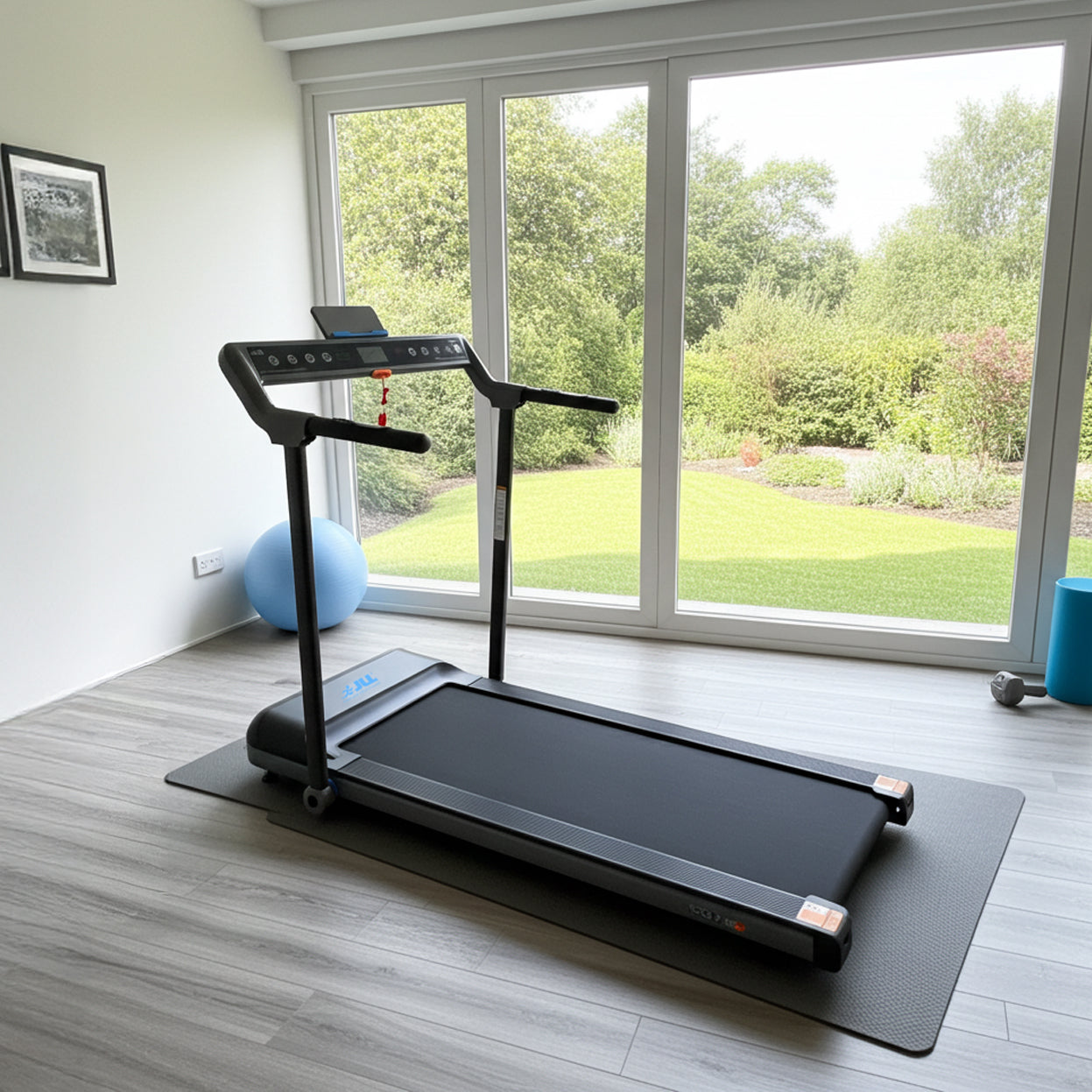
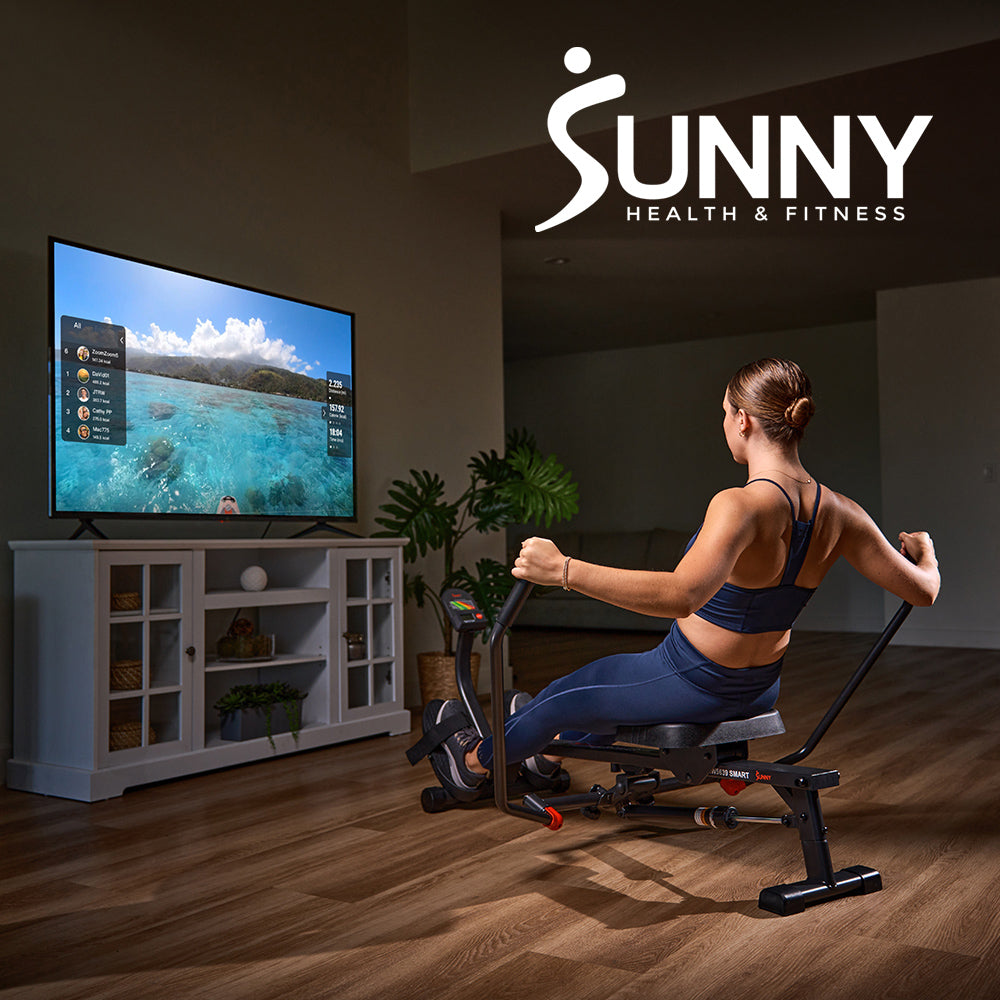
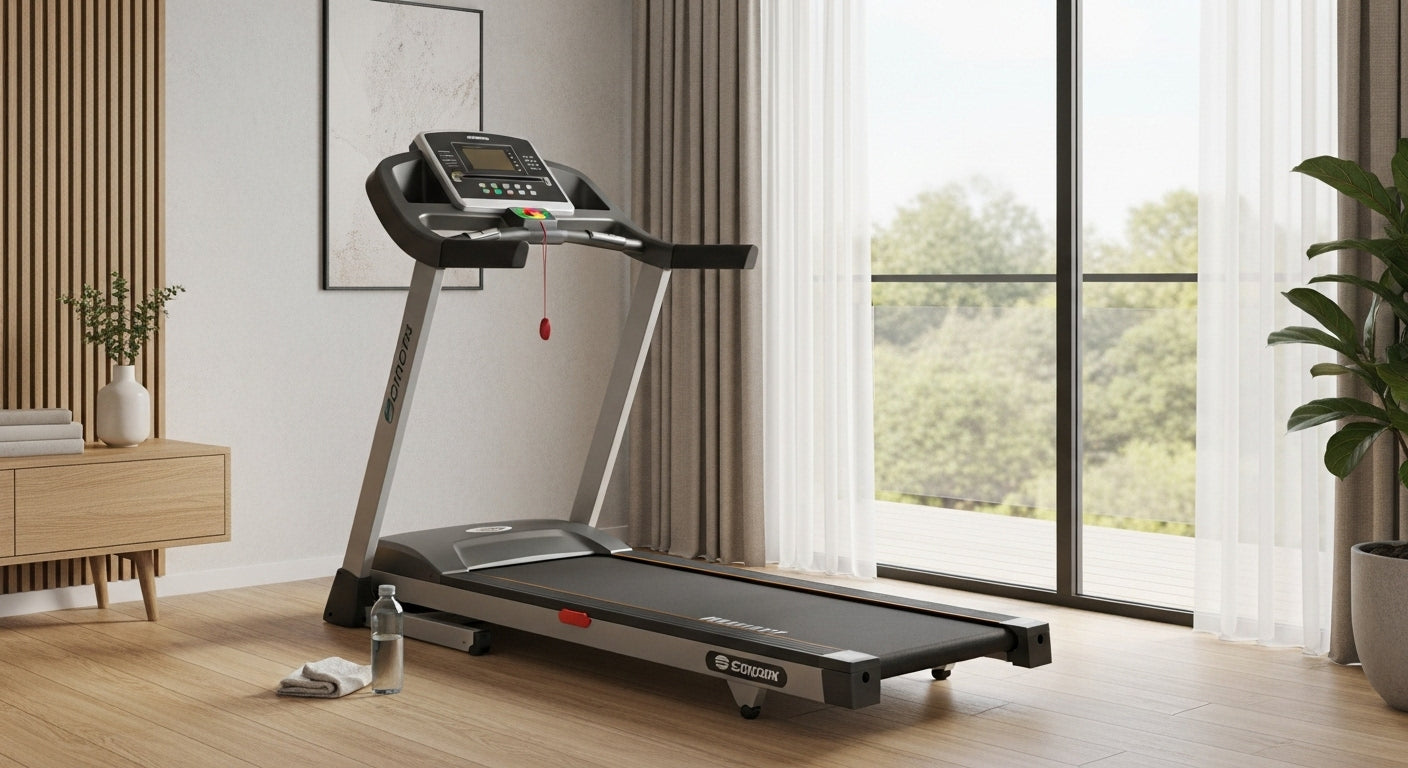
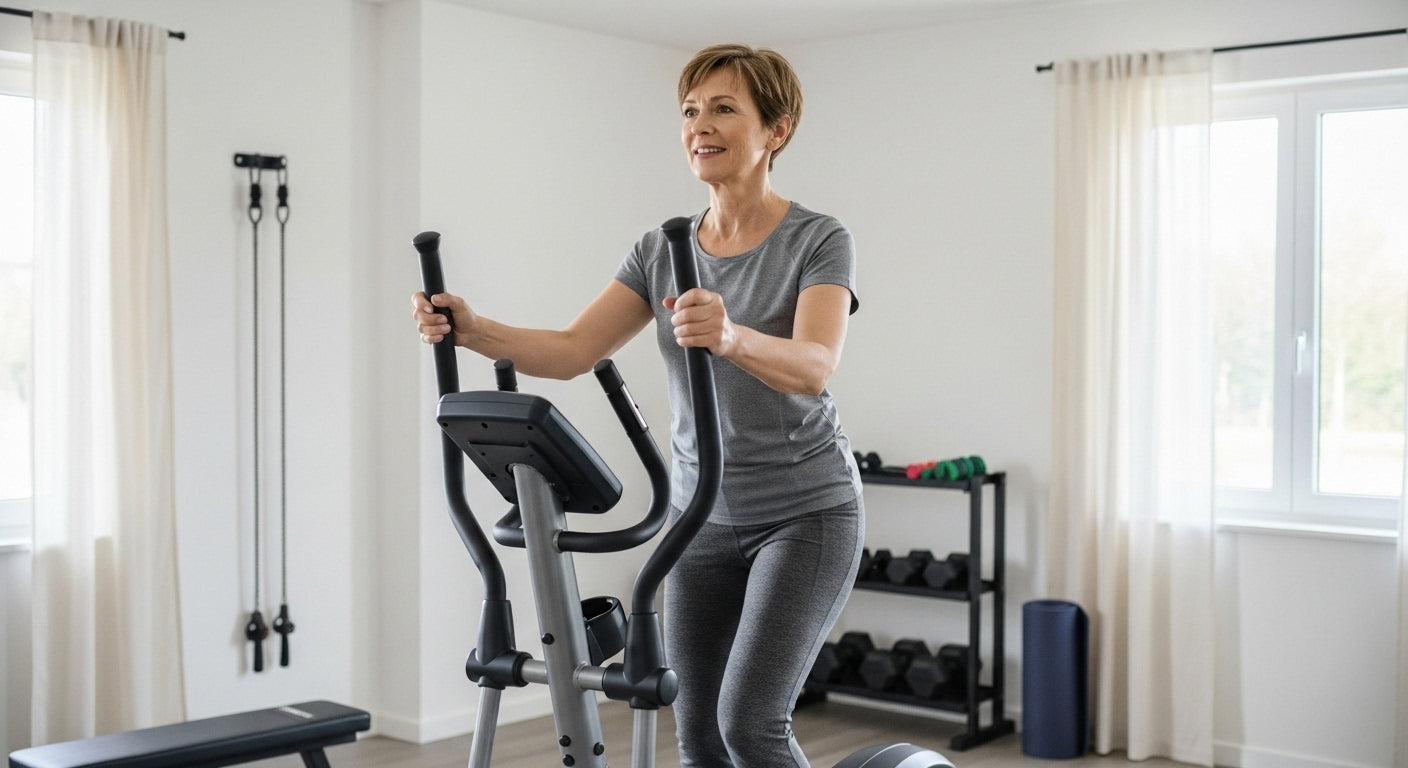
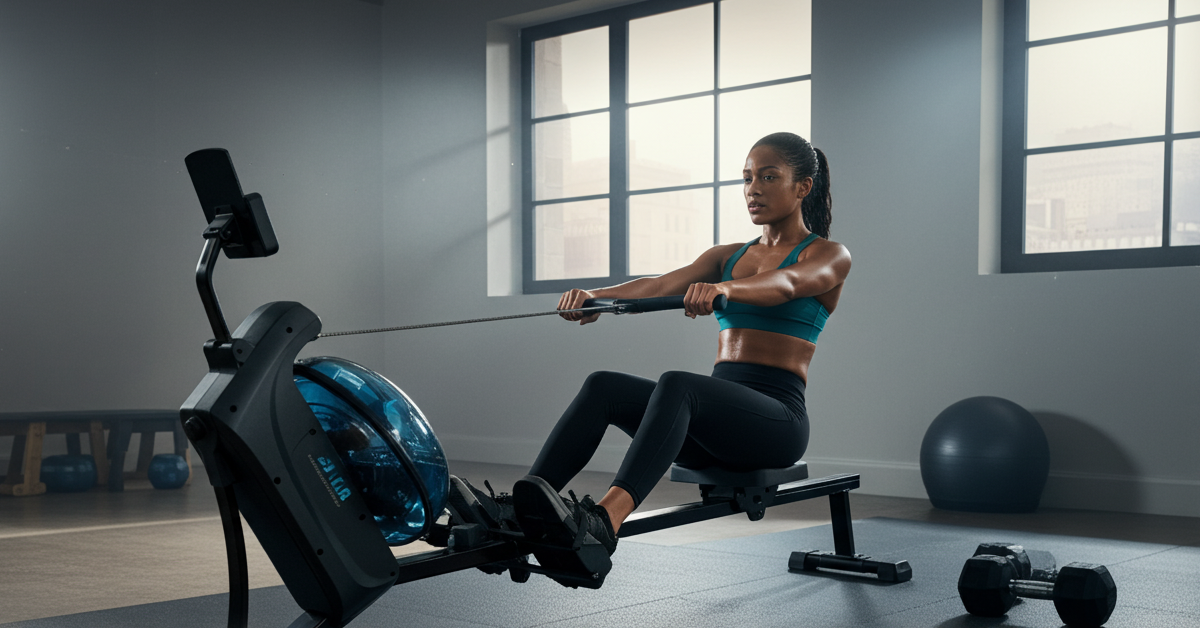



Leave a comment
All comments are moderated before being published.
This site is protected by hCaptcha and the hCaptcha Privacy Policy and Terms of Service apply.